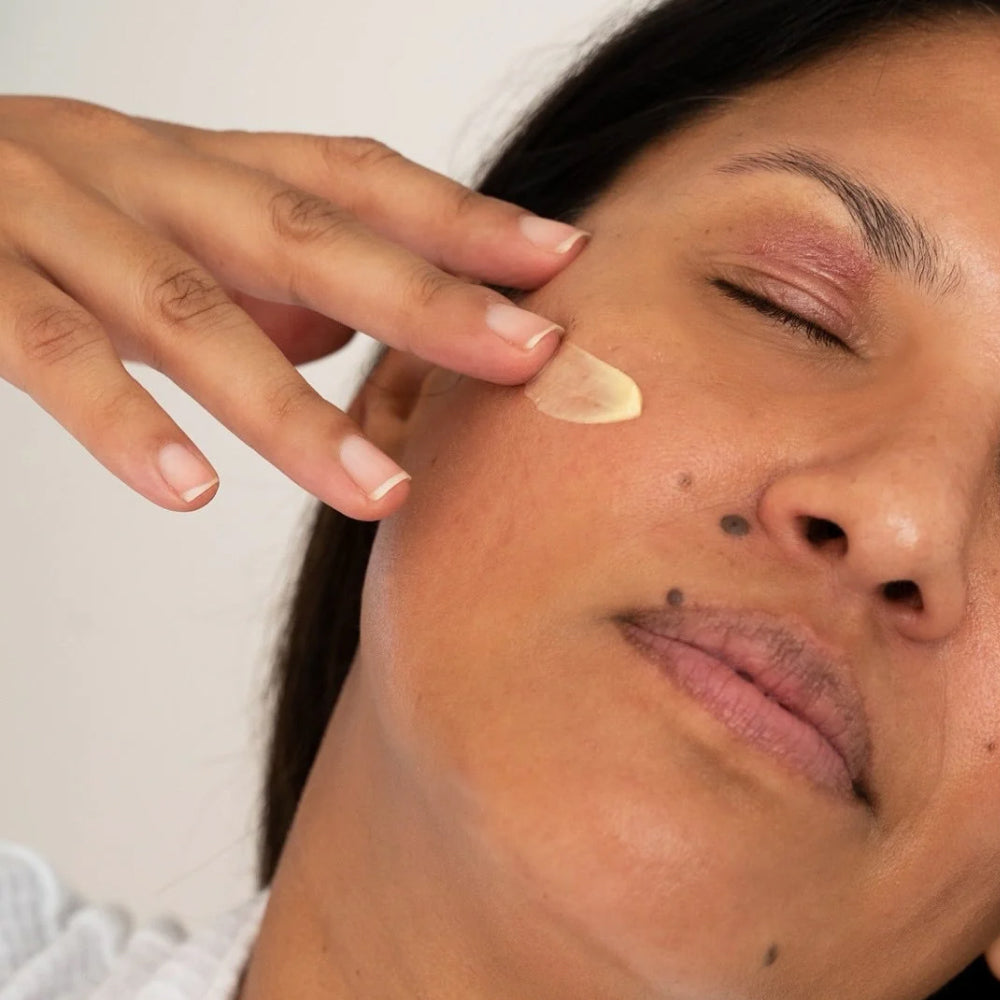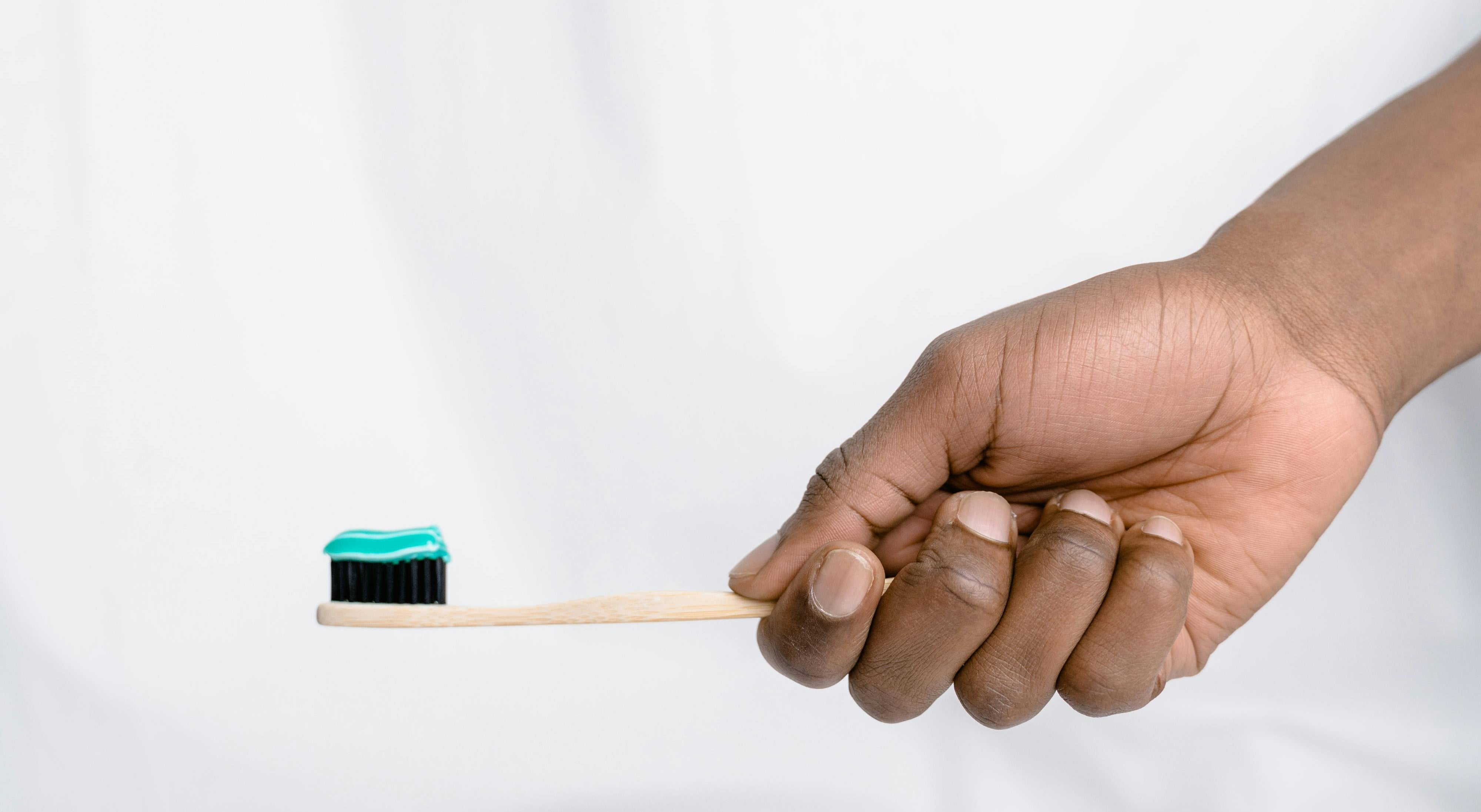Perioral dermatitis is a persistent and often frustrating skin condition that affects many individuals, causing redness, irritation, and discomfort around the mouth and other facial areas. This condition can significantly impact self-confidence and quality of life, making effective management essential. While its exact causes remain complex and can vary from person to person, emerging evidence points to certain chemicals as potential triggers that may worsen symptoms.
In this article, we’ll delve into the link between fluoride and perioral dermatitis, help you identify harmful ingredients to avoid in your daily routine, and provide effective treatment strategies to soothe and restore your skin. By understanding these factors, you’ll be better equipped to manage flare-ups and maintain healthier, clearer skin.
WHAT IS PERIORAL DERMATITIS?
Perioral dermatitis is a skin disorder that appears primarily as a red, inflamed acne-like rash surrounding the mouth. Skin lesions often appear rough, dehydrated, and flaky. They often leave visible swelling bumps called papules. This condition is often confused with acne due to their similarities, leading to misdiagnoses. The rash can extend from the mouth to other parts, such as the nose and eyes, or very rarely, the genitals. Itching and burning sensations are very common symptoms among perioral dermatitis patients.
The possible cause of perioral dermatitis is unclear. However, experts have identified several factors that could contribute to its development:
- Topical steroid creams and inhaled steroid sprays can trigger or worsen perioral dermatitis
- Triggers may also include heavy moisturizers, fluoridated toothpaste, chewing gum, and certain dental fillings
- Other underlying causes are hormonally related (including birth control pills), skin barrier functional impairment, compromised immune system, altered skin microflora, microorganisms such as bacteria or Candida albicans (a type of fungus), or Demodex mites
- Environmental effects, like harsh weather and stress, could also lead to an outbreak
IS FLUORIDE MAKING YOUR PERIORAL DERMATITIS WORSE?
Fluoride has been identified as a potential aggravator of perioral dermatitis. A study published in the Australian Dental Journal suggests that high-fluoride toothpaste may contribute to the development of perioral dermatitis. Since fluoride is widely present in toothpaste and drinking water, it can irritate the mouth, potentially triggering or aggravating this skin condition. This is particularly concerning for individuals with sensitive skin, where fluoride may disrupt the protective skin barrier, leading to inflammation and the appearance of red, irritated patches.
Research from the Fluoride Action Network also suggests that fluoride and perioral dermatitis could trigger significant inflammation and impair the skin's natural barrier function. Residual fluoride left in the oral area from toothpaste or water increases the likelihood of inflammation, redness, and papules. Irritation can sometimes disrupt the immune response triggered by a similar cause, leading to a worsening of the condition.
If you suspect fluoride is the cause of your condition, consider switching to fluoride-free toothpaste and sensitive-skin products. Additionally, check for other irritants in your toothpaste, such as artificial flavors or preservatives, which may compound the issue.
WHAT CHEMICALS SHOULD BE AVOIDED WITH PERIORAL DERMATITIS?
If you have perioral dermatitis, it’s important to avoid these ingredients to prevent any other irritation or further damage from happening through the skin barrier:
- Parabens and Phthalates: These preservatives are very common in skincare products but are harsh and worsen skin sensitivity.
- Alcohol: Can be extremely drying and trigger sensitive skin, causing redness and breakout.
- Sulfates: Sulfates are a frequent ingredient in most foaming cleansers. They strip the natural oils off the skin, weakening the skin barrier.
- Oxybenzone: The ingredient mainly occurs in chemical sunscreens and is known for being an irritant.
- Fragrance and Essential Oils: These can trigger irritation and redness.
- Petrolatum, PEGs, and Paraffin: These ingredients are heavy and can block pores, making symptoms worse.
For perioral dermatitis, choosing gentle, calming products that promote healing and strengthen the skin barrier is essential.
TREATMENTS FOR PERIORAL DERMATITIS
Perioral dermatitis is a manageable yet persistent condition that typically depends on simple lifestyle changes, mild topical therapy, and assistance from a physician. Eliminate all possible irritants such as topical steroids (unless instructed by your doctor), fluoride toothpaste, heavy face creams, makeup, sunscreens, and chewing gum to control symptoms. Avoid using harsh cleansers/scrubbing skin that might further damage the skin barrier.
Switch to a simple, soothing skincare regimen with lightweight, fragrance-free products formulated specifically for sensitive skin. A dermatologist or a primary care physician may also give independent treatment recommendations that can include topical prescription medication for inflammation control. Although it typically takes weeks for these methods to show results, consistency is important.
As perioral dermatitis often recurs, identifying and avoiding triggers while maintaining a personalized skincare routine is crucial. Consider consulting a naturopath for holistic support, such as dietary recommendations, to complement your treatment plan.
SOOTHE AND PROTECT YOUR SKIN WITH PHOILEX
Perioral dermatitis can be managed by starting a gentle skincare regimen that protects and heals the skin barrier. Phoilex products are specially designed for sensitive skin, which can help relieve symptoms of perioral dermatitis. They act by soothing skin inflammation, balancing moisture, and reinforcing the skin's natural barrier, which may help with perioral dermatitis symptoms.
PHOILEX - SUPPORTING YOUR SKIN’S RECOVERY
Phoilex offers science-backed solutions for sensitive and reactive skin types. Our products are designed to help with symptoms caused by perioral dermatitis, including those potentially triggered by fluoride and perioral dermatitis. To effectively manage this condition, it is imperative to identify some of its triggers, avoid harmful irritants, and use a tailor-designed skincare routine.
Click here to explore the full range of Phoilex products. Start your journey to healthier, clearer skin today!
Frequently Asked Questions!
Q: What are the main symptoms of perioral dermatitis?
A: Perioral dermatitis typically appears as a red, inflamed rash around the mouth with rough, flaky patches and small bumps called papules. The condition can also cause itching, burning sensations, and visible swelling, and may extend to areas around the nose and eyes in some cases.
Q: How does fluoride potentially affect perioral dermatitis?
A: Fluoride, particularly in toothpaste and dental products, has been identified as a potential trigger that can worsen perioral dermatitis symptoms. Many patients report improvement in their condition when switching to fluoride-free oral care products, though individual responses may vary.
Q: What are the known triggers for perioral dermatitis besides fluoride?
A: Common triggers include topical steroid creams, inhaled steroid sprays, heavy moisturizers, and certain dental materials. Hormonal changes, compromised immune system function, altered skin microflora, and environmental factors like harsh weather and stress can also contribute to outbreaks.
Q: Can birth control pills affect perioral dermatitis?
A: Yes, birth control pills can influence perioral dermatitis due to their hormonal effects on the skin. The condition has been linked to hormonal fluctuations, making some women more susceptible to flare-ups during certain times of their menstrual cycle or when starting or stopping hormonal contraceptives.
Q: Why is perioral dermatitis often confused with acne?
A: Perioral dermatitis shares visual similarities with acne, including red bumps and inflammation around the mouth area. However, perioral dermatitis typically has a distinct pattern of occurrence around the mouth and responds differently to traditional acne treatments, which is why proper diagnosis is crucial for effective treatment.
Q: How does skin barrier function relate to perioral dermatitis?
A: Impaired skin barrier function can make individuals more susceptible to perioral dermatitis by allowing irritants to penetrate the skin more easily. A compromised barrier can result from overuse of harsh products, environmental factors, or underlying skin conditions, making proper skin barrier support essential for management.
References:
Peters, P., & Drummond, C. (2013a, August 27). Wiley Online Library | Scientific Research Articles, journals,. https://onlinelibrary.wiley.com/doi/10.1111/jbi.13723/
Periorificial dermatitis (perioral dermatitis): Authoritative guidance - dermnet. DermNet®. (2024, August 26). https://dermnetnz.org/topics/periorificial-dermatitis
Perioral dermatitis: Treatment, symptoms & causes. Cleveland Clinic. (2024c, September 10). https://my.clevelandclinic.org/health/diseases/21458-perioral-dermatitis
Red rash around your mouth could be perioral dermatitis. American Academy of Dermatology. https://www.aad.org/public/diseases/a-z/perioral-dermatitis
Ramsey Mellette, J., Aeling, J. L., & Nuss, D. D. (2012, April 17). Fluoride & perioral dermatitis. Fluoride Action Network. https://fluoridealert.org/studies/mellette-1983/
Perioral dermatitis and what it means for you | colgate®. Colgate. (2023, January 9). https://www.colgate.com/en-us/oral-health/mouth-sores-and-infections/rash-around-mouth-perioral-dermatitis-and-what-it-means-for-you
Read more

What do ceramides do for skin? Learn how they restore your skin barrier, lock in moisture, and protect against dryness and damage in this expert-backed guide.

Eczema is an uncomfortable skin condition characterized by scaly patches, intense itching, redness, and inflammation. While drugs like corticosteroids focus on controlling symptoms, Ayurveda Ayurve...
